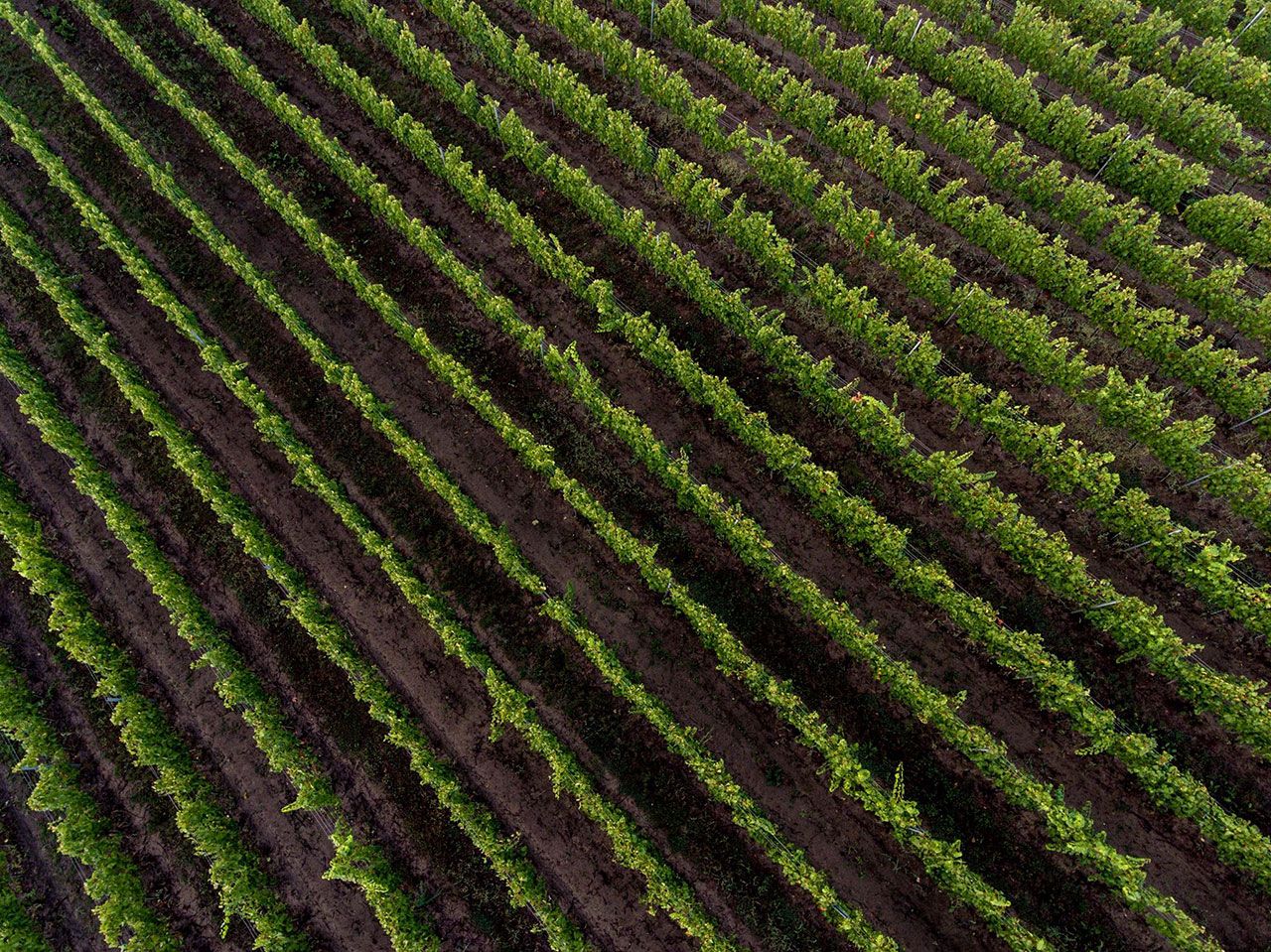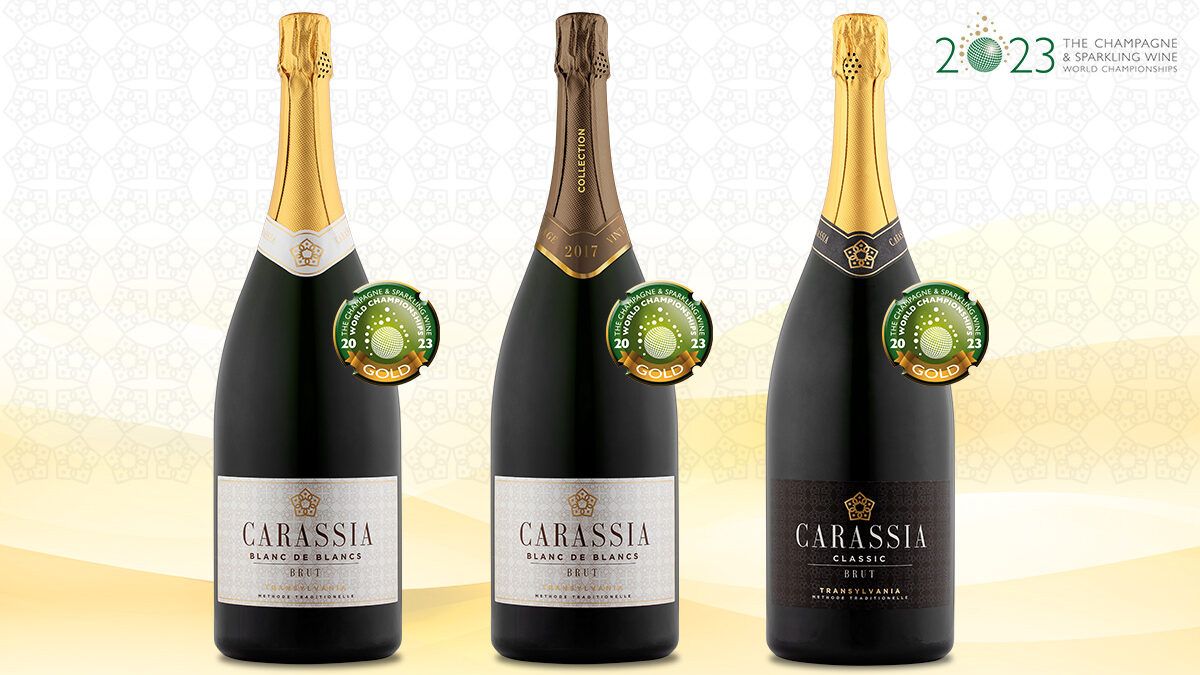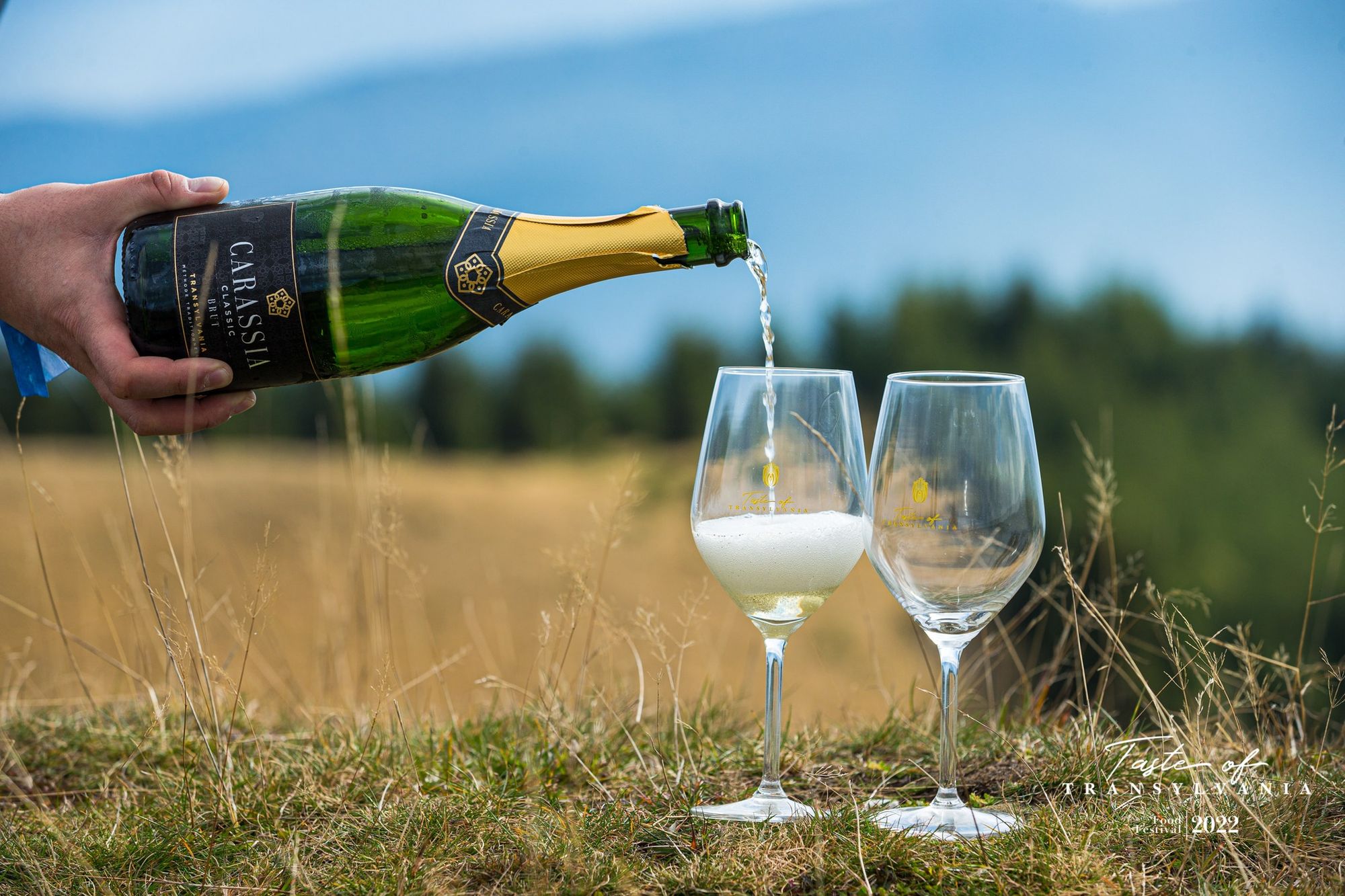Carassia: a rising star of Transylvanian sparkling wine, from Szilágyság, a recently rediscovered wine region. Four devoted friends and a Hungarian investor was needed for the success.
If you think about sparkling wine, the first region coming to your mind is probably not Transylvania. Nevertheless, this region – previously part of historic Hungary, now belonging to Romania – is on the same latitude as Burgundy, the home of Pinot Noir, which is also the main ingredient for champagnes in Champagne.

This is where the late Tibor Gál, one of the most influential Hungarian winemakers found a perfect spot for champagne grape varieties around 2000. (Or, more precisely, next to a small sack village, Kárásztelek or Carastelec, in the northern part of Transylvania.) His vision turned out to be so successful that it earned several gold and silver medals for the Hungarian Carassia sparkling wines. Sadly, he was not able to witness it himself, since he died in a tragic car accident in 2005.
In fact, Kárásztelek has its own history concerning wine making. The wines are from Szilágyság, also known as the Land of Silvania or Sălaj County was first mentioned as a wine making region in the 18th century. On a map from 1770 Kárásztelek is already depicted with grapevines. The climate here is cool, the soil is clay: perfect for producing Chardonnay, Pinot Noir and other champagne style grape varieties. Four friends founded the Kárásztelek sparkling winery here with the funding of investors András Tombor, a Hungarian businessman and philanthropist who also owns a winery in Tokaj.

Carassia sparkling wines are produced with the traditional method, by second fermentation and maturation in bottles. Each step of the production process from the first and second fermentation to disgorging, bottling and labelling is done in the winery. Blanc and rosé Brut can both be found in the selection that receive outstanding results at the championships year to year.
The Carassia Blanc de Blancs Brut, matured for a minimum of 24 months, made of 100% Chardonnay, won a silver medal in 2017 and a gold and Best in Class in 2018 at the Champagne and Sparkling Wine World Championship (CSWWC), and received a gold medal at the Vinarium International Wine Contest in 2021.
The Carassia Blanc de Blancs Brut Magnum, matured for a minimum of 36 months, made of 100% Chardonnay also won a silver medal in 2019 and a gold medal in 2021 at the CSWWC, while also gained the Best in Class award both in the Romanian Blanc de Blancs and Magnum category. In 2023 it won a gold medal again.
The Carassia Rosé Brut is made of 30% Pinot Noir, 24% Meunier, 40,5% Chardonnay and 5,5% red wine. It is matured for 24 months on lees in the bottle. It received a silver medal in 2017, and was awarded a gold medal, the Best in Class Romanian Rosé, the National Champion and the Chairman’s Trophy at the CSWWC in 2021.
The Carassia Classic Brut, a mixture of Chardonnay, Pinot Noir and Meunier, which is matured for a minimum of 36 months won a silver medal at the CSWWC from 2019 until 2022 for four consecutive years.
The Carassia Classic Brut Magnum, which contains 65% Chardonnay, 18% Pinot Noir and 17% Meunier, won the Best in Class Romanian Magnum and Romanian NV Brut awards and was also the National Champion at the CSWWC in 2019. It also won the gold medal and was awarded the Best In Class Romanian NV Brut in 2021. In 2023 it won a gold medal once again.
The winery can indeed be proud of its achievements in 2023: after five years of maturation their first Long Maturation Magnum, the Carassia Blanc de Blancs Magnum 2017 Vintage Collection also won a gold medal at the Champagne and Sparkling Wine World Championship.

Will Szilágyság be the Champagne of the Carpathian Basin? Thus far, the results are more than encouraging. Hopefully, after many challenging experiences – two world wars, the Trianon treaty, the communist era – a prosperous future can begin for the Transylvanian wine regions. Perhaps a few terroirs, still hiding, can surprise us like Carassia did, thanks to András Tombor and four friends who dared to dream big.









